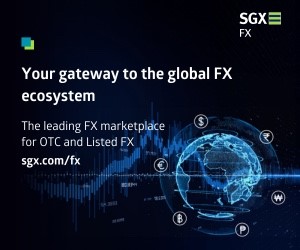FX Options Volume Can Predict Exchange Rate Moves: Paper
Posted by Colin Lambert. Last updated: March 7, 2022
A new staff working paper published by the Bank of England studies the information content in FX options trading volumes and concludes that volume can predict future exchange rate moves, especially when demand for the dollar is high. The paper also notes that exchange rate predictability is stronger around macro announcement days and that hedge funds and real money investors’ trading is more informative for future direction that other investor types.
The study, which encompasses the period from November 2014 to December 2016, used data from over one million trades reported to the DTCC Repository that had a UK counterparty on at least one side. The authors, Robert Czech, Pasquale Della Corte, Shiyang Huang and Tianyu Wang, say that comparative analysis of their data with that in the Bank for International Settlements and UK FX Joint Standing Committee surveys, finds the dataset is representative of the broader market.
The study uses a daily rebalancing strategy, largely across the seven busiest currency pairs (the link is weaker in EM and less busy currencies), that buys dollars in those pairs that saw high trading volumes and sells for those with low. It provides an annualised Sharpe Ratio (effectively a risk-adjusted return) of 1.69 (across 20 currency pairs this drops to 0.71).
The paper also finds, perhaps unsurprisingly given the attention each sector pays to exchange rate moves, that hedge funds and asset managers’ trading is more informative that corporates and non-trading banks. These customer segments tend to be busiest when they see an opportunity in markets – hence the increase in volumes – and stick largely to G7 thanks to the liquidity levels in those markets that allows them to hold larger positions. For the second half of the study period the authors were able to access direction trades in the DTCC Repository, something that reinforced their findings on hedge fund and investors’ informed trading.
Equally, the authors find that dealer-to-customer flow is more informed than dealer-to-dealer – largely, they observe, because dealers’ activity in the market normally reflects the balance of their clients’ trading. Whether this might change is circumstances such as exist now, where FX options desks might see the value in positioning in currency markets, is not covered by the paper.
It is notable that the study finds a link with exchange rate returns rather than interest rate differentials, this suggests that a lot of the trading activity that augurs a move is opportunistic, or event-driven, rather than propelled by carry or other fundamental strategies used in market economics.
To quantify the demand for dollars in particular, the study used the US Treasury premium and the JP Morgan VXY Index, which tracks the implied volatility of major currency pairs.
In some ways the finding that FX options volumes reflect demand for dollars especially is unsurprising, after all this largely reflects the “risk on-risk off” nature of markets for much of the last decade.
Equally, options, when used to express a directional view, are more popular during events, such as macro announcements and other upheavals, therefore volumes are likely to go higher. What is interesting is how the authors find that there is a definitive bias towards buying dollars, rather than selling. To a degree, events likely to move the market are more of a “shock” nature and therefore tend to be “risk off”, however.
The authors do note in the paper that the demand for dollar assets may be “driven by liquidity and safety concerns”. They add, “We indeed find that the return predictability arising from FX option volume is largely concentrated around periods of high demand for dollars.”
While, therefore, this paper will not prompt a major re-think amongst traders in FX markets, it does offer another piece of evidence worth watching when building a picture of the market, especially for e-trading teams that tend to rely upon empirical analysis rather than the traditional trader’s knowledge or “gut feel”.
The fact that the paper is able to identify when and in which instruments (typically deep out-of-the-money and short term options) the informed investors are likely to express their view, reinforces the value of the study, although it is notable that, as the authors acknowledge, being able to leverage this type of work very much relies upon a player’s ability to access the appropriate data in a timely and cost-effective fashion.
The full paper can be found here.



